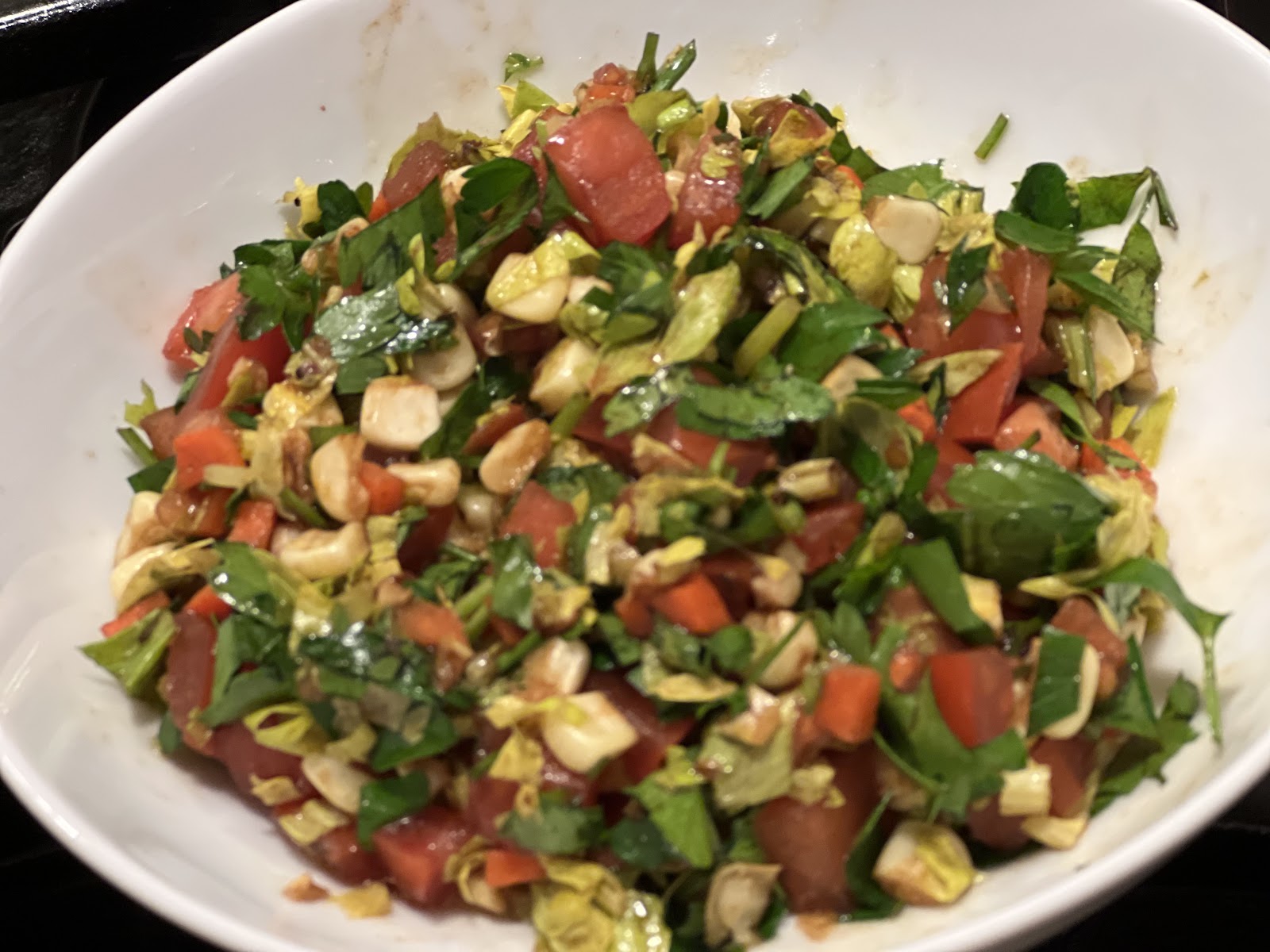Many of the Vietnamese restaurants that have appeared in Los Angeles over the past year have focused on modified versions of street food: pho (the richly flavored beef or chicken noodle soup) and banh mi (French baguette sandwiches with meat and pickled vegetables). Both are available at The District, but these are versions made with high-quality, fresh ingredients and they are only two of several dozen dishes on the menu.
Hannah An is the eldest daughter of the family behind Beverly Hills' Crustacean, a restaurant known for the quality of its seafood and the elegance of the dining room. The design of the District is more casual. With an outdoor patio and windows that open to the street, the restaurant is light and airy and elegant in its own way.
Recently I joined half dozen other food writers for a tasting. We ate land animals and creatures from the deep. Some were crispy fried, others were braised with a layering of flavors. We ate steamed rice, soft braised noodles, light as air spring rolls, deeply flavored soup, a salad topped with a beautiful piece of crispy-skin salmon, an excellent Vietnamese iced coffee with sweetened condensed milk and a delicious cocktail that had plenty of heat.
The menus (lunch, dinner and Sunday brunch) overlap with dishes like pho (beef and chicken) and fried calamari available any time of day. Some like cha go roll are favorites in Vietnamese restaurants. At The District, the fried rice paper rolls practically evaporate in your mouth. There is not a drop of oil on them. Inside the well-compacted roll is a mix of ground chicken and vegetables. The garlic lime dipping sauce has enough heat and sweetness to compliment the other flavors.
The affordably priced dishes are large enough to share. For those who want to splurge for a celebration, there is fresh lobster and filet mignon.
The best dishes at The District draw on the flavor combinations that immediately tell you the chef is from Vietnam. Whether combined in a sauce or used in the dish itself, freshly squeezed lime juice, cilantro, peppers and pepper flakes, fish sauce, fresh fruit, garlic and lemon grass are used by a practiced hand that knows exactly how much is the correct amount.
We were served black cod in a clay pot. In Vietnam the fish used would probably be catfish. Flaky and moist, the cod has a silken texture familiar to anyone who has eaten a version of Morimoto's miso-black cod, a dish served at many upscale Japanese restaurants. Chef An uses lemon grass, fish sauce and a five spices mix to put a little edge into the darkly rich sauce. Chinese broccoli and thin uncooked ginger strips add texture. On the very bottom of the hot pot were two triangles of fresh pineapple lying in wait for anyone who needed a bit of sweet-acid to add to the already complex flavor profile of the dish.
The calamari plate was another standout. Topped with a salad of purple kale and frisee, the crinkly leaves complimented the crispy calamari. The dipping sauce, another classic Vietnamese mix of fish sauce, peppers and lime juice rounded out the flavors. A selection of cocktails accompanied the calamari. The colorful cocktails have colorful names: Hot Asian, Side Car to Vietnam, Love You Long Time and Face Down in Saigon.
The playfully named cocktails are well-crafted drinks designed by David Shoham, a mixologist well-known in Los Angeles. The freshly squeezed juices and the mix of heat and sweet are masterful.
My hands down favorite of those we tasted was the Hot Asian. I could describe it, but I'll let the menu do it for me, "lemon gras infused Loft and Bear Vodka, organic Vietnamese chili agave, fresh squeezed lime juice, garnished with lime zest and Vietnamese chili." Hopefully you noticed that "chili" appeared twice in the description. Topping the ice filled glass was a whole, bright red pepper for those who wanted even more heat.
I didn't need more heat, but I would have happily consumed another Hot Asian if I had brought along a designated driver. The cocktail was that delicious.
There is so much more to be said about The District by Hannah An. We ate a great many delicious dishes -- pho bo (beef with noodles), Hannah's noodles with crispy whole lobster, shaken beef with filet mignon so tender it really did melt in the mouth, chicken curry with fava beans, peas, thickly cut red onion rings with Thai basil and a kale Caesar salad topped with a crispy-skin salmon filet.
There are many more dishes on the menu I want to try. I love the idea of chef An's take on French onion soup that uses bone marrow and Vietnamese spices. I want to have the roasted ginger chicken, crispy tofu, braised short ribs, District salad with prawns, kale and curly endive, duck confit salad with Vietnamese herbs, roasted cauliflower with pistachios, coriander-crusted lamb and the flatbreads (chicken, pork belly and heirloom tomato-burrata).
They all sound delicious.
The District by Hannah An, 8722 West Third Street, LA, CA 90048, 310/278-2345. Open for lunch Monday-Friday, dinner every night and Sunday brunch.



























